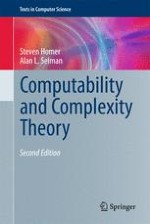2011 | OriginalPaper | Buchkapitel
11. Introduction to Counting Classes
verfasst von : Steven Homer, Alan L. Selman
Erschienen in: Computability and Complexity Theory
Verlag: Springer US
Aktivieren Sie unsere intelligente Suche, um passende Fachinhalte oder Patente zu finden.
Wählen Sie Textabschnitte aus um mit Künstlicher Intelligenz passenden Patente zu finden. powered by
Markieren Sie Textabschnitte, um KI-gestützt weitere passende Inhalte zu finden. powered by
